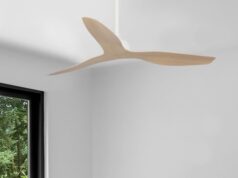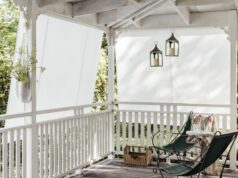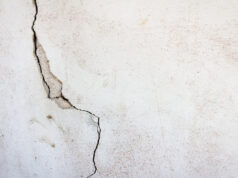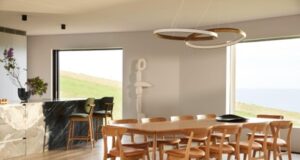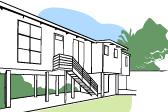
The best things you can do to make sure your house is effectively ventilated are to think carefully about air flow at the design stage, and to face your house in the right direction.
The location of your home is a major factor in designing a proper ventilation system, and understanding the way air flows across it can make the difference between an effective and ineffective ventilation system.

Every object on your block of land effects the way the wind moves. Every tree, bush, shrub or fence can change the direction of the wind in either a positive or negative way. For example, if you have a hedge on the windward side of your home, it can divert the wind away from your home.
Channelling wind
When wind blows up against a wall (or other barrier), it creates a damming effect. The wind pressure builds up and the flow of the wind changes direction. To capitalise on this pressurised pooling effect, this is where you should install your inlet vents and windows. This will forcibly push cooler air into your home, and warmer air out the other side.
You should also be aware that the direction of the wind isn’t just affected by whatever is on your block of land, but also by what is on your neighbours’ block as well.
Orientation
The orientation of your home and its windows should be planned to maximise prevailing winds. Coastal breezes usually come from an onshore direction. In mountainous or hilly areas, cool breezes often flow down valleys in late evening and early morning as night cooling creates cool air currents. If you’re planning to build a new home but you’re worried about a lack of breeze due to confinement, it’s worth considering building your house on stilts – particularly if you’re on the side of a hill.

